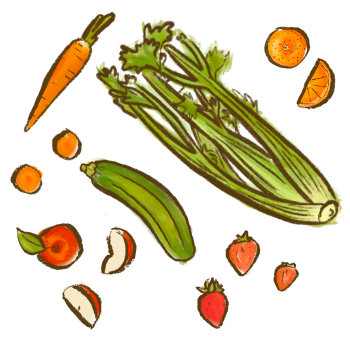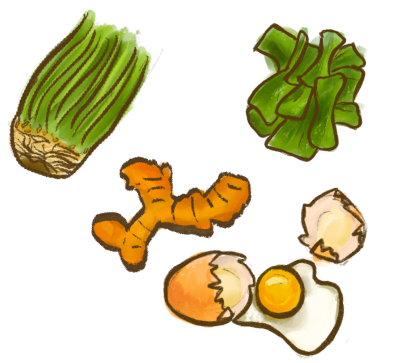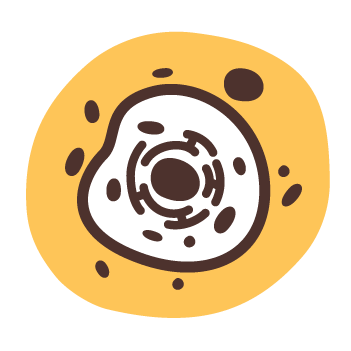What is BARF?

BARF dog food is becoming more popular with pet parents making educated decisions about their pet’s health and wellbeing. BARF stands for Biologically Appropriate Raw Food or Bones and Raw Food. This model of feeding is based on the principles of our dog’s evolutionary nutrition and is the most common and popular raw diet for dogs.
What makes up a BARF diet?
A BARF diet generally consists of 70% muscle meat, 10% offal (organ), 10% raw bone, 10% fresh vegetables and fruit, and other healthy ingredients. Ingredient selection will change over the course of your pet’s life based on their age and activity. Varying the types of protein sources and the choice of plant matter is important for maximum nutritional exposure over the course of your pet’s life. Just like us humans, pets need variation in their diet to ensure it is balanced.
Muscle meats

Muscle meat is one of the richest sources of complete protein for our pets. Muscle meats provide all of the amino acids our pets need for healthy muscle growth and function. Amino acids are also vital to the function of other important biological processes including healthy immune function and the metabolism of foods and environmental agents by the liver. In an evolutionary diet, muscle meat would be classed as the following:
- Skeletal muscle
- Heart
- Lungs
- Tripe (aka stomach lining)
- Tongue
This should comprise 70% of a raw diet and while some of these ingredients may have a bit of an ick factor to us, it’s these ingredients that can have the most health-promoting effects for our dogs.
Fat is a vital energy source for our pets. Naturally occurring fats within skeletal muscle and surrounding bone and organs provide a highly digestible natural form of energy. These healthy saturated fats, in appropriate amounts, provide energy for our pets to burn and contain fat soluble nutrients such as vitamins and minerals. Grass fed meat is particularly rich in omega-3 fatty acids, which is important for brain function among many other health benefits.
Organs

Offal is often the prized possession that is first to go when our wolf ancestors would devour their prey and should comprise 10% of a raw diet. The organs are a powerhouse of nutrition, not to mention flavour, for our pets. These delicacies include:
- Liver
- Spleen
- Kidneys
- Reproductive organs (ovaries and testes)
- Endocrine organs (thyroid, thymus, adrenal glands)
- Brain
- Eyes
While all these organs aren’t necessary daily requirements, there is a critical component, and this is the liver. A highly concentrated source of critical fat-soluble vitamins and minerals including A, D, K, and E, the liver should comprise at least 4% of the diet (5% if it is the only organ being used).
Raw Edible Bone

Soft, raw edible bones are a crucial ingredient in a raw healthy diet due to their absorbable calcium content. For this reason, the bone should make up 10% of a BARF diet. Calcium isn’t the only hero in bones, they are rich in nutrition due to bone marrow, collagen, glucosamine, and chondroitin, all responsible for healthy bone and joint function throughout life.
Note: The guidelines for bone start at 10%, however, the amount of raw meaty bones your dog will need to retain healthy and consistent poos, may vary for each dog. To monitor this, you can use our dog poo guide; too much calcium in your dog’s diet may result in pale, crumbly stools.
Fresh Fruit and Vegetables

Plant matter is the final component of a raw healthy homemade diet. A diverse selection of plant matter provides a naturally complete range of vitamins and minerals. Mostly green leafy and coloured vegetables, as well as fruits these supply antioxidants, phytonutrients, fibre, and moisture as well as essential vitamins and minerals. Ideally, these should be blended and crushed to a pulp to ensure better absorption.
Other Healthy Ingredients

An easy way to boost your dog’s diet is to add in smaller amounts of superfoods such as eggs, fatty fish, ground seeds, turmeric, kelp, pre- and probiotics, just to name a few. These foods each have a unique nutritional profile that will benefit your dog.
Why should I feed my pet a BARF diet?
Some of the benefits of feeding a natural, species appropriate BARF diet include:

A stronger immune system

Improved cardiovascular health

Increased cognitive ability

Lower incidence of digestive problems

Healthier coat and skin

Decreased incidence of obesity

Reduced incidence of disease and degenerative disorders
A balanced BARF diet is a fantastic way to provide your dog with all essential nutrients. Varying the types of protein sources and the choice of plant matter is important for maximum nutritional exposure over the course of your pet’s life.
A BARF model diet is highly recommended for the average pet parent wanting to raw feed their dog. Big Dog Pet Foods are trusted raw feeders and have been manufacturing raw pet food diets for over 20 years in alignment with BARF feeding principles. We take product quality and safety seriously with a dedicated QA team testing and supervising all batches from delivery of raw ingredients through to delivery to pet stores.
Get in touch with us today if you’d like to learn more about raw feeding for your pet.
If you liked this article, sign up to our Big Dog Fam Mail to receive more great pet health and happiness advice.
If you liked this article, please share on Facebook.
